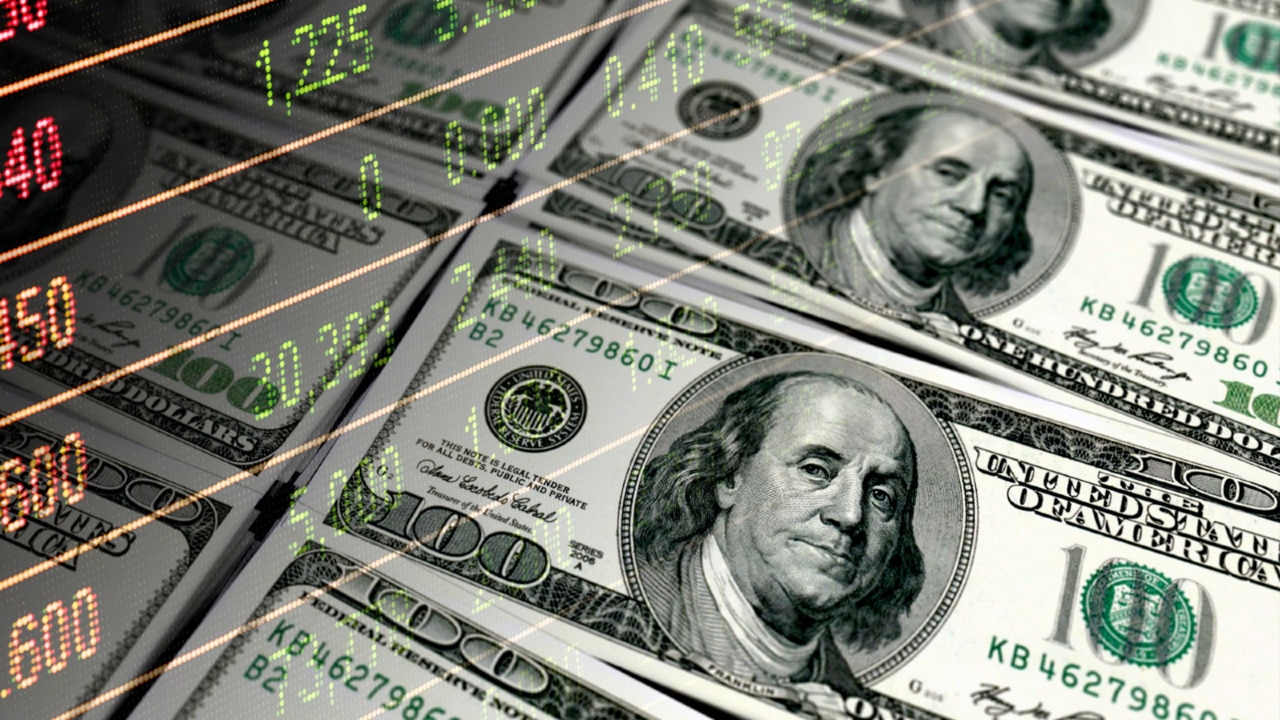Warning Aussie dollar could drop to 40 cents to US dollar
The Australian dollar is getting whipped and it could take for it to go as low as 40 cents to the US dollar before anything is done about it.

Economy
Don't miss out on the headlines from Economy. Followed categories will be added to My News.
ANALYSIS
Economist and philosopher John Maynard Keynes is famous for saying that markets can stay irrational longer than you can stay solvent.
As the Australian dollar (AUD) plunges, Aussie importers and international travellers must wonder if he was referring to them. The AUD is once again swooning towards new lows.
In truth, the currency has been getting whipped for more than a decade. There have been ebbs and flows, some lasting years, but a pattern of lower highs has been intact since 2011.
A tale of two superpowers
So, are the recent falls irrational? The answer lies in the relative prospects for our two great and powerful friends, the US and China.
It is no coincidence that the AUD has almost perfectly tracked the rise and fall of Chinese catch-up growth.
From 2002, when China joined the World Trade Organisation (WTO), the AUD rose considerably as China built a modern economy using Aussie commodities. It did so by siphoning off developed market industrial complexes. So, they, in turn, had weak currencies versus the AUD.
However, since 2011, that dynamic has reversed. Other developed markets have rebuilt industrial bases while Australia has not:
Developed economies like the US are, once again, becoming more diverse, self-sufficient and sophisticated.
This has the flow-on effect of lifting productivity and the labour share of income, which boosts growth and, ultimately, a currency.
Conversely, Australia has chosen to grow its population via immigration, rather than its industrial base.
This has the opposite effect. It weighs on wages, lifts input costs like land, and is disproductive as capital (machines, infrastructure etc) is shallowed across more people.
In effect, we get more people but less output growth per person as the economy gets less sophisticated.
Why use an efficient automated car wash when you can employ twenty underpaid workers to scrub your hubcaps?
The end game
The great superpower transition is still ongoing. China still has many years of slowing growth and diminishing investment.
Its apartment and infrastructure busts have just begun, leading to further downsides for Aussie resources revenues.
The Australian government’s commodity forecaster, the Office of the Chief Economist, is pulling no punches in this regard:
Also, the US industrial recovery is gathering steam for another surge in the next cycle. Its technology firms have seized leadership in artificial intelligence, guaranteeing further capital deepening in sophisticated value-added growth.
So, the two forces that brought the Australian dollar down from $1.11 to today’s 0.63 cents are ongoing. And, heaven forbid, may be pricing for a conflict between the two in which weak Chinese growth triggers outward aggression and US industrial strength fights it off.
In effect, the shifting relativities of superpower risk keep sending the AUD lower, encouraging Australia to diversify its industrial base. But Canberra keeps refusing to take yes for an answer, preferring to grow the population.
An AUD with a four in front of it may be needed to deliver the message.
David Llewellyn-Smith is Chief Strategist at the MB Fund and MB Super. David is the founding publisher and editor of MacroBusiness and was the founding publisher and global economy editor of The Diplomat, the Asia Pacific’s leading geopolitics and economics portal. He is the co-author of The Great Crash of 2008 with Ross Garnaut and was the editor of the second Garnaut Climate Change Review.
Originally published as Warning Aussie dollar could drop to 40 cents to US dollar




